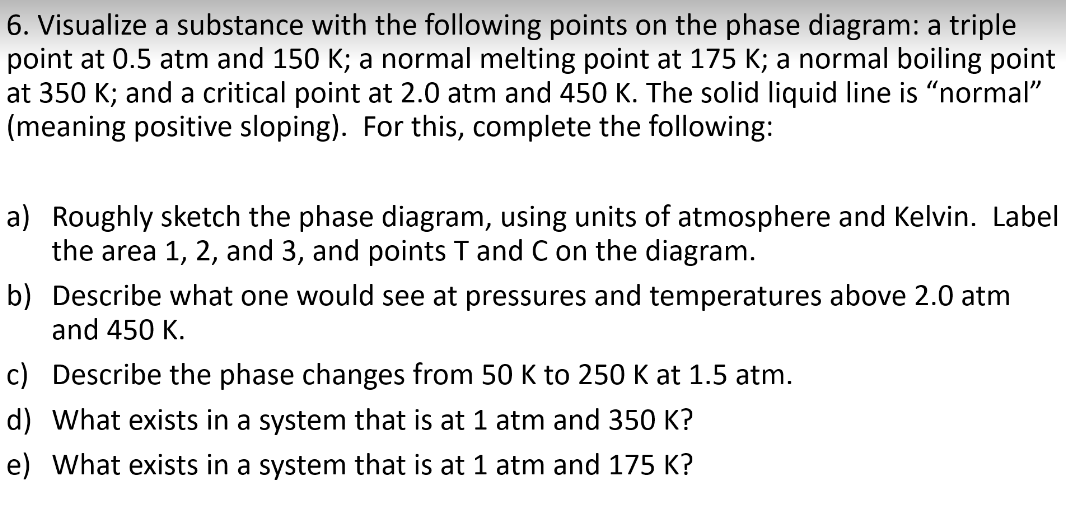6. Visualize a substance with the following points on the phase diagram: a triple point at 0.5 atm and 150 K; a normal melting point at 175 K; a normal boiling point at 350 K; and a critical point at 2.0 atm and 450 K. The solid liquid line is "normal" (meaning positive sloping). For this, complete the following: a) Roughly sketch the phase diagram, using units of atmosphere and Kelvin. Label the area 1, 2, and 3, and points T and C on the diagram. b) Describe what one would see at pressures and temperatures above 2.0 atm and 450 K. c) Describe the phase changes from 50 K to 250 K at 1.5 atm.
States of Matter
The substance that constitutes everything in the universe is known as matter. Matter comprises atoms which in turn are composed of electrons, protons, and neutrons. Different atoms combine together to give rise to molecules that act as a foundation for all kinds of substances. There are five states of matter based on their energies of attraction, namely solid, liquid, gases, plasma, and BEC (Bose-Einstein condensates).
Chemical Reactions and Equations
When a chemical species is transformed into another chemical species it is said to have undergone a chemical reaction. It consists of breaking existing bonds and forming new bonds by changing the position of electrons. These reactions are best explained using a chemical equation.

Trending now
This is a popular solution!
Step by step
Solved in 5 steps with 1 images









